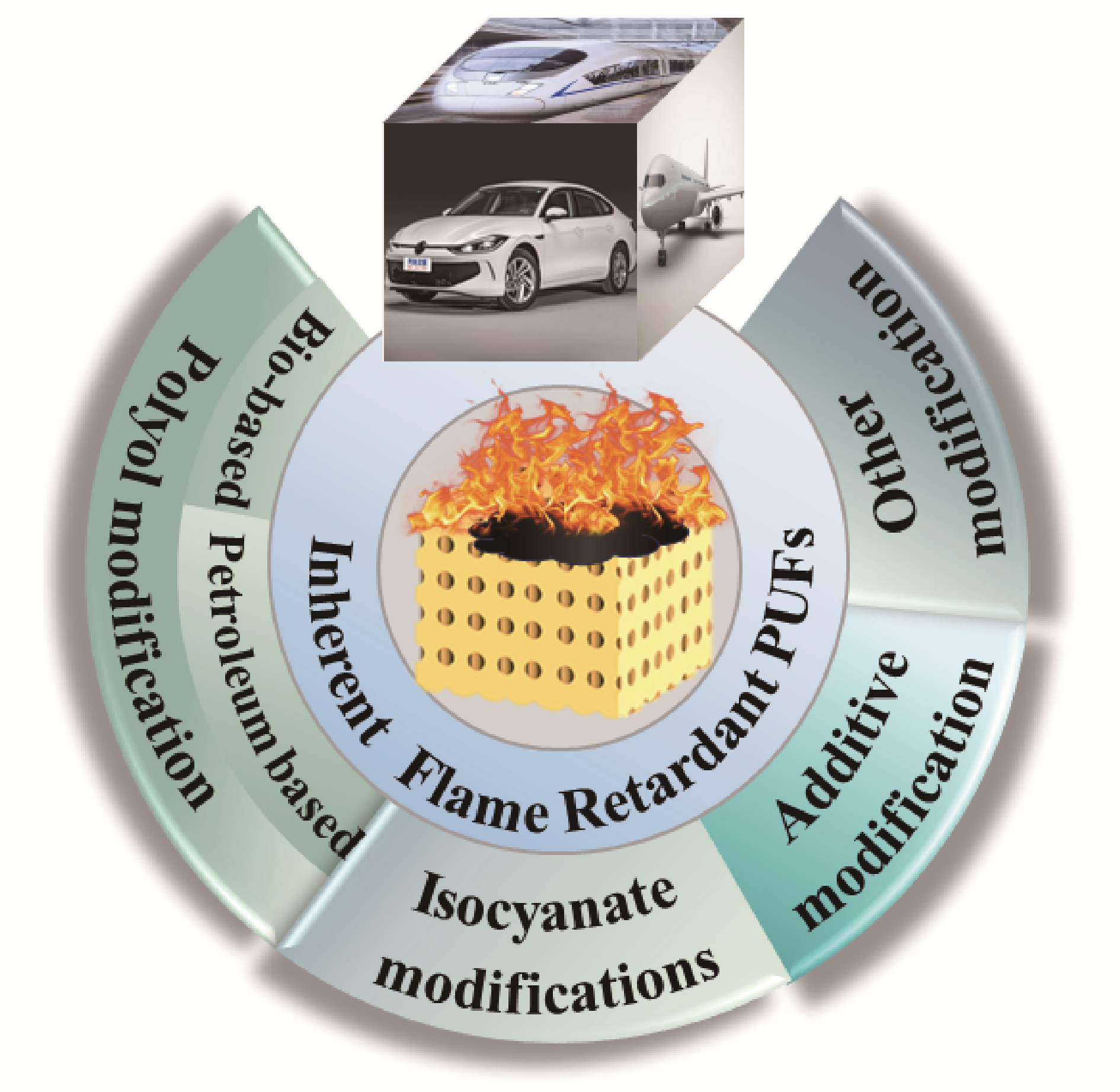 PDF(30821 KB)
PDF(30821 KB)


 PDF(30821 KB)
PDF(30821 KB)
 PDF(30821 KB)
PDF(30821 KB)
本征阻燃聚氨酯泡沫的制备及应用*
Preparation and Application of Inherent Flame-Retardant Polyurethane Foams
Polyurethane foam is one of the most important and widely used synthetic polymers since the 20th century. Because of its low density, high specific strength and outstanding thermal insulation performance, it has been widely used in the fields of aerospace sound absorption and noise reduction, railway solidified ballast and building thermal insulation. However, high flammability seriously threatens the safety of people's lives and property, and restricts its further development. Although the flame retardancy of polyurethane foam can be simply and efficiently improved by the introduction of additive flame retardants or surface flame retardant coating treatment, these two flame retardant methods inevitably lead to the migration and precipitation of flame retardants, resulting in the failure of flame retardancy and the damage to its inherent properties. In contrast, the introduction of reactive flame retardant molecules into the polymer chain segment by copolymerization to endow polyurethane foam with intrinsic flame retardancy can effectively solve the problem of flame retardant migration and precipitation, and has less impact on the performance of the substrate itself, which is more favored by the industry and has a broader application prospect in the future engineering field. In this paper, from the point of view of monomer molecule flame retardant modification design, various methods of preparing intrinsic flame retardant polyurethane foam in the past 10 years were reviewed, including polyol modification, isocyanate modification, additive modification and other modifications. The challenges that still need to be overcome were analyzed, and the future application development direction was prospected.
polyurethane foam,As one of the most important and widely used synthetic polymers since the 20th century,exhibits advantages such as low density,high strength,and excellent thermal insulation.it finds widespread applications in fields like aerospace noise reduction,railway track stabilization,and building insulation.However,its high flammability poses a serious threat to human life and property,limiting its further development.the addition or surface coating of flame retardants can indeed enhance the flame retardancy of polyurethane foam efficiently.However,these methods often result in the migration and precipitation of flame retardants,ultimately compromising its flame retardant properties and internal performance.Alternatively,the copolymerization of reactive flame retardant molecules into the polymer chain offers a more effective solution.This approach not only addresses the issues of flame retardant migration and precipitation but also minimizes the impact on the substrate’s properties.as a result,It is highly favored by the industry and holds immense potential for future engineering applications.This review aims to provide a comprehensive overview of various methods for the preparation of intrinsic flame-retardant polyurethane foams over the past decade,focusing on the perspective of monomer molecular design and synthesis.This includes polyol modifications,isocyanate modifications,additive modifications,and other modifications.Furthermore,the review will delve into the challenges that remain to be addressed and offer insights into potential future directions for application development。
1 Introduction
2 Polyol modifications
2.1 Petroleum-based polyol
2.2 Bio-based polyol
3 Isocyanate modifications
4 Additive modifications
5 Other modifications
6 Conclusion and outlook

polyurethane foam / inherent flame retardant / preparation / application progress
| [1] |
|
| [2] |
|
| [3] |
|
| [4] |
|
| [5] |
|
| [6] |
|
| [7] |
|
| [8] |
|
| [9] |
|
| [10] |
|
| [11] |
|
| [12] |
|
| [13] |
|
| [14] |
|
| [15] |
|
| [16] |
|
| [17] |
|
| [18] |
|
| [19] |
|
| [20] |
|
| [21] |
|
| [22] |
|
| [23] |
|
| [24] |
|
| [25] |
|
| [26] |
|
| [27] |
(陈明军. 西华大学学报(自然科学版), 2020, 39(5): 57.)
|
| [28] |
( 张佳燕, 刘博文, 王玉忠, 赵海波. 高分子学报, 2022, 7: 842.)
|
| [29] |
|
| [30] |
|
| [31] |
|
| [32] |
|
| [33] |
|
| [34] |
|
| [35] |
|
| [36] |
|
| [37] |
|
| [38] |
|
| [39] |
|
| [40] |
|
| [41] |
|
| [42] |
|
| [43] |
|
| [44] |
|
| [45] |
|
| [46] |
( 马晓振, 罗清, 秦冬冬, 陈景, 朱锦, 颜宁. 化学进展, 2020, 32(5): 617.)
|
| [47] |
|
| [48] |
|
| [49] |
|
| [50] |
|
| [51] |
|
| [52] |
|
| [53] |
|
| [54] |
|
| [55] |
|
| [56] |
|
| [57] |
|
| [58] |
|
| [59] |
|
| [60] |
|
| [61] |
|
| [62] |
|
| [63] |
|
| [64] |
|
| [65] |
|
| [66] |
|
| [67] |
|
| [68] |
|
| [69] |
|
| [70] |
|
| [71] |
|
| [72] |
|
| [73] |
|
| [74] |
|
| [75] |
|
| [76] |
|
| [77] |
|
| [78] |
|
| [79] |
|
| [80] |
|
| [81] |
|
| [82] |
|
| [83] |
|
| [84] |
|
| [85] |
|
/
| 〈 |
|
〉 |